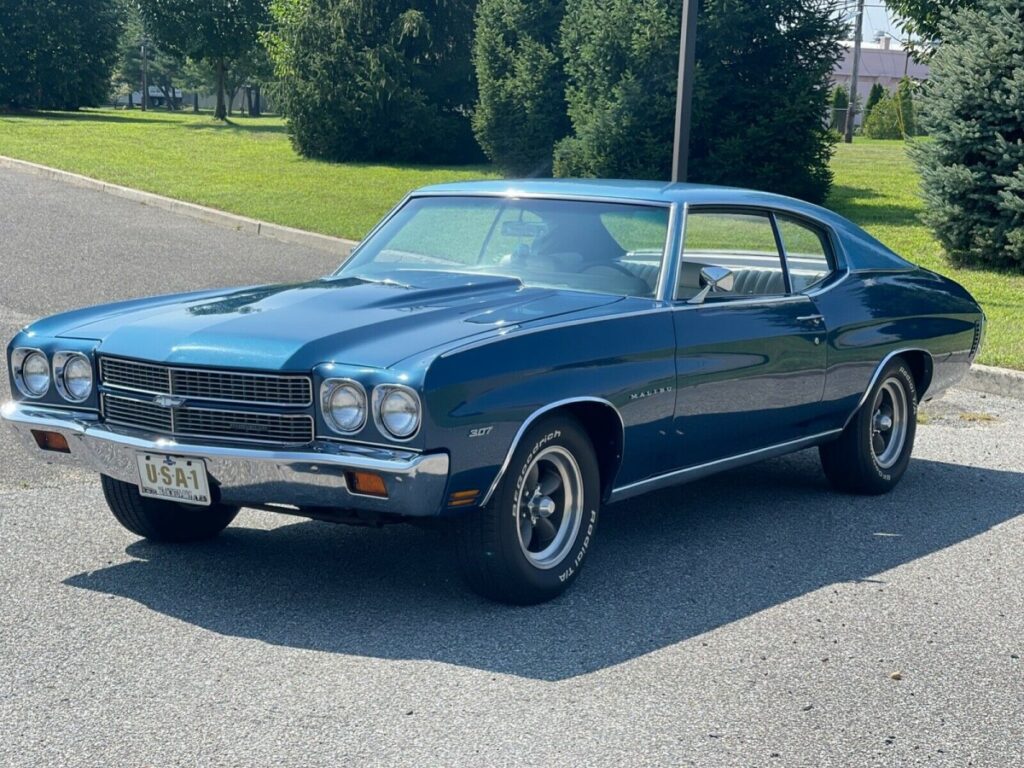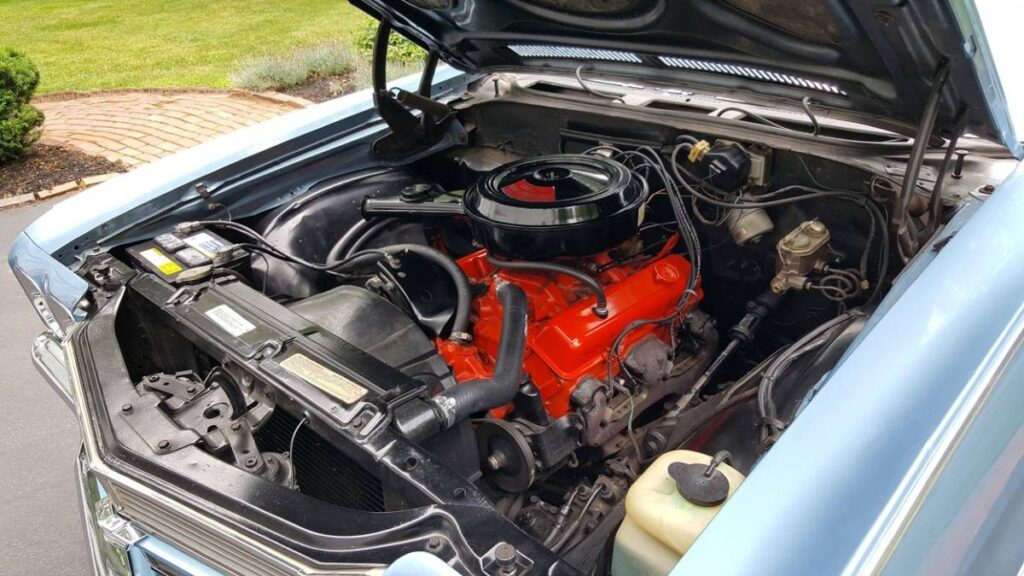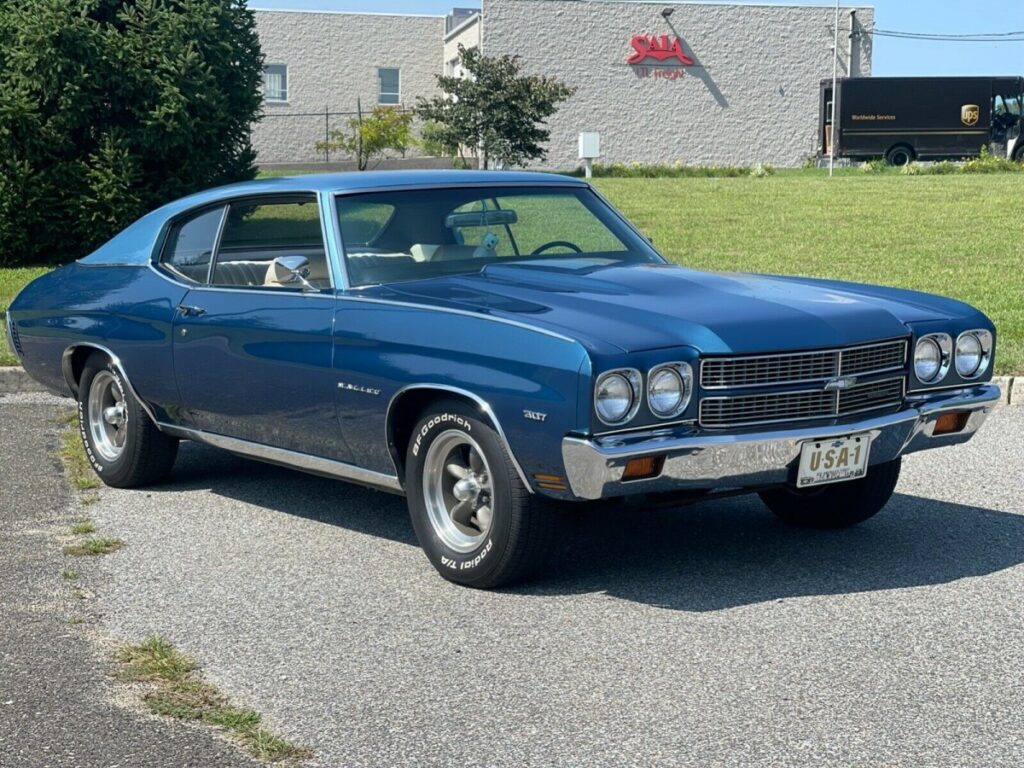The 1970 Chevrolet Chevelle Malibu is an iconic American muscle car, representing the peak of the muscle car era with its bold styling, powerful engine options, and cultural significance. As part of the Chevelle lineup, the Malibu was a mid-level trim, positioned above the base model but below the high-performance SS (Super Sport) variants. However, its versatility and availability with potent V8 engines made it a favorite among enthusiasts.

Overview
The 1970 Chevelle Malibu was part of the second-generation Chevelle, which ran from 1968 to 1972. The 1970 model year stood out for its aggressive redesign, featuring a squared-off body, wider stance, and distinctive front grille with dual headlights. The Malibu was offered in multiple body styles, including a two-door coupe, convertible, four-door sedan, and station wagon, making it appealing to a wide range of buyers, from families to performance enthusiasts.
Design and Styling
The 1970 Chevelle Malibu had a muscular, sculpted look that defined the era’s aesthetic. Key design elements included:
- Exterior: A bold front fascia with a wide grille, rectangular headlights, and a prominent bumper. The body featured smooth, flowing lines with a slight coke-bottle shape, giving it a sleek yet aggressive profile. Chrome trim accentuated the Malibu’s upscale positioning.
- Interior: The cabin was functional yet stylish, with a driver-focused dashboard, bucket or bench seat options, and available upgrades like a center console, woodgrain accents, and premium upholstery. The Malibu offered more refinement than the base Chevelle, appealing to buyers seeking comfort alongside performance.

Performance and Engines
The Malibu could be equipped with a range of engines, from economical six-cylinders to fire-breathing V8s, making it highly customizable. Key engine options included:
- Standard: A 250-cubic-inch (4.1L) inline-six, producing around 155 horsepower, aimed at budget-conscious buyers.
- V8 Options:
- 307-cubic-inch (5.0L) V8, producing 200 horsepower.
- 350-cubic-inch (5.7L) V8, with outputs ranging from 250 to 300 horsepower.
- 396-cubic-inch (6.5L) V8, available in 350 or 375 horsepower variants (often associated with the SS package).
- The legendary 454-cubic-inch (7.4L) LS5 and LS6 V8s, exclusive to the SS models, delivered 360 and 450 horsepower, respectively, though these could be ordered in Malibus upgraded to SS specs.
- Transmissions: Options included a three-speed manual, four-speed manual, or three-speed automatic (Turbo Hydra-Matic). The four-speed manual was a favorite for performance enthusiasts.
- Performance: With the right V8, a 1970 Chevelle Malibu could run the quarter-mile in the low 14-second range, with top-tier SS models dipping into the 13s, rivaling dedicated sports cars of the era.

Trim and Options
The Malibu was a step above the base Chevelle, offering features like:
- Vinyl or cloth upholstery, with optional bucket seats.
- Available air conditioning, power windows, and a tilt steering wheel.
- Optional Rally wheels and performance suspension for a sportier look and feel.
- The ability to upgrade to SS equipment, including hood stripes, SS badging, and high-performance engines, blurred the line between a standard Malibu and the SS.
Cultural Impact
The 1970 Chevelle Malibu, particularly in SS form, became a cultural icon, symbolizing the raw power and freedom of the American muscle car era. Its aggressive styling and performance made it a staple in car shows, drag racing, and pop culture, appearing in films, TV shows, and music videos. The car’s popularity endures among collectors and restorers, with well-preserved or restored examples commanding high prices at auctions.

Legacy
The 1970 Chevelle Malibu is often regarded as the pinnacle of the Chevelle lineup due to its combination of style, power, and versatility. Its massive V8s and bold design made it a standout in an era when Detroit’s automakers were pushing performance to the limit before emissions regulations and fuel crises curbed the muscle car boom. Today, it remains a sought-after classic, celebrated for its timeless design and exhilarating performance.


